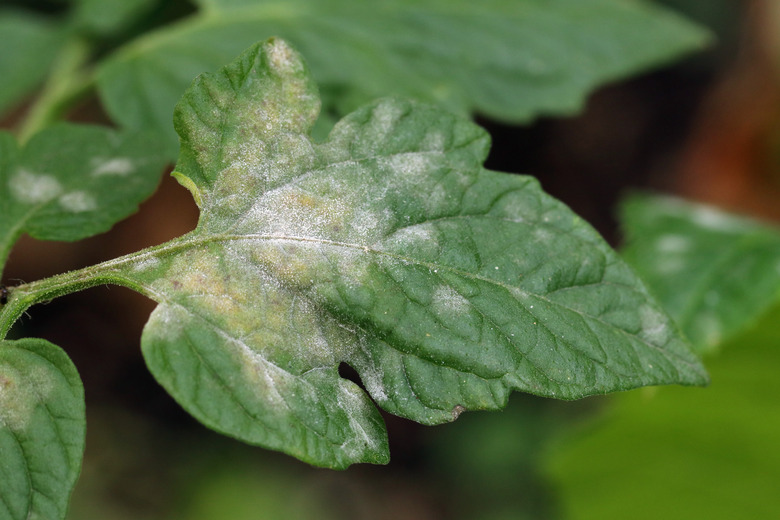Difference Between Downy Mildew & Powdery Mildew
Not all white mildew found on plant leaves are the same. Though both powdery mildew and downy mildew look similar, they're two separate entities and infect different types of plants. Both types of mildew thrive in similar conditions and can be kept at bay with the right growing conditions.
Powdery Mildew
Powdery Mildew
Powdery mildew is caused by different fungal pathogens. Though it most prevalent on the top sides of leaves, it can also appear on both the top and bottom sides of leaves. Leaves infected with this mildew look as if someone spilled a powdery substance on them.
In addition to the powdery white spots, gardeners can identify powdery mildew by curled and discolored leaves. Leaves with powdery mildew can turn brown or yellow as the fungus takes over.
Powdery mildew thrives in moderate but humid temperatures, and especially appreciates conditions where plants are crowded together. Though this type of mildew can spread quickly with the right conditions, it's only topical and rarely fatal to the plant.
The crape myrtle (Lagerstroemia indica, USDA zones 6-9) is especially susceptible to powdery mildew, as are some flowering plants, such as annual zinnias (Zinnia spp.) and phlox (Phlox spp., USDA zones 3-8), and fruiting plants, such as tomatoes (Lycopersicon esculentum, USDA zones 10-11) and annual squash (Cucurbita spp.)
Downy Mildew
Downy Mildew
Downy mildew isn't caused by a fungus but is part of the mold family called a water mold. This type of mildew is commonly found on the undersides of leaves and isn't as easy to identify. Because downy mildew can cause leaves to droop and develop yellow patches and brown spots, symptoms can mimic a variety of other plant-related conditions.
Gardeners can identify downy mildew by lifting discolored leaves and seeing if there's a white or grayish-white downy substance underneath. Downy growth may also produce black spots. Because downy mildew penetrates the leaf itself, it causes more damage and can be fatal to the plant.
Like powdery mildew, downy mildew thrives in high humidity and overcrowded plant beds, but it prefers cooler temperatures. This mildew is most prevalent on impatiens, basil, mint, snapdragon, coleus, viburnum and melons.
Preventing Mildew on Plants
Preventing Mildew on Plants
To avoid having susceptible plants fall prey to powdery or downy mildew, plant them with enough space between so they're not crowded together and air can flow freely. Unless plants require shade, plant them where they can receive abundant sunshine so their leaves dry quickly after rain or watering. Water plants at the roots, keeping the leaves as dry as possible. Watering plants in the morning means water dries in the sunshine and doesn't remain on leaves overnight. Weed plant beds often so air continues to flow.
Treating Infected Plants
Treating Infected Plants
Always wear gloves when treating plants infected with downy or powdery mildew. Rubbing infected leaves together can remove some topical powdery mildew. If plants aren't too far gone, pinch the affected leaves for removal, and destroy or throw them away. Don't throw infected leaves in compost as that can cause the infection to spread to future plants.
If downy mildew has penetrated the leaves or if the infection is too far gone to remove leaves, use a fungicide formulated to treat these types of mildew. They're found in any home improvement or gardening store, and will list the types of mildews they combat on their label. Always follow all directions and safety precautions before using a chemical mildew removal product.
